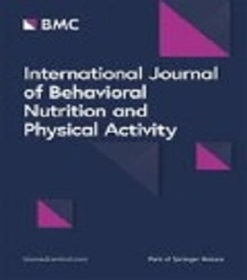A randomized controlled trial to test the effects of displaying the Nutri-Score in food advertising on consumer perceptions and intentions to purchase and consume
IF 5.5
1区 医学
Q1 NUTRITION & DIETETICS
International Journal of Behavioral Nutrition and Physical Activity
Pub Date : 2024-04-15
DOI:10.1186/s12966-024-01588-5
引用次数: 0
Abstract
Some research shows that advertising for high-fat, sugar, or salt (HFSS) products is contributing to a shift in consumer preferences toward products of poor nutritional quality, leading to unhealthy nutritional intakes that increase the risk of obesity and chronic diseases. A strategy of displaying simple and understandable nutritional information (like the front-of-pack nutrition label Nutri-Score) in food messages could be an aid to help guide consumers’ choice towards healthier products. A randomized controlled experiment was conducted on 27,085 participants randomly assigned to two experimental conditions or a control condition. In both experimental conditions (independent variable: advertising messages with vs. without the Nutri-Score), participants were exposed to advertisements for diversified food products with contrasting nutritional quality and belonging to nine different food categories. Participants were then asked questions about their perception, affective evaluation, and intentions to purchase and consume the products. In the control condition, they were not exposed to the advertisements. Overall, interaction effects between the two variables (1) the messages with vs. without the Nutri-Score and (2) the nutritional quality of products, were significant for all dependent variables, with effect sizes between large and medium. Overall, the better the products’ nutritional quality, the more positive their perceptions, affective evaluations, and intentions to buy and consume them. When the Nutri-score was displayed in advertising messages (vs. when it was not), perceptions, affective evaluation, and behavioral intentions: (1) became more positive for products of good nutritional quality (Nutri-score A and B), (2) became more negative for products of poor nutritional quality (Nutri-score D and E), (3) changed little or not at all for products of intermediate nutritional quality (Nutri-Score C). This research is the first in the literature to demonstrate that displaying the Nutri-Score in advertising messages assists consumers in directing their choices towards healthier foods. Regulations mandating the display of the Nutri-Score in food advertising could be an effective public health measure.一项随机对照试验,测试在食品广告中显示营养成分对消费者购买和消费的看法和意向的影响
一些研究表明,高脂、高糖或高盐(HFSS)产品广告正在促使消费者偏好转向营养质量差的产品,从而导致不健康的营养摄入,增加肥胖和慢性疾病的风险。在食品信息中显示简单易懂的营养信息(如包装正面的营养标签 Nutri-Score),可以帮助引导消费者选择更健康的产品。我们对 27 085 名参与者进行了随机对照实验,他们被随机分配到两个实验条件或一个对照条件中。在这两种实验条件下(自变量:含有与不含营养成分的广告信息),参与者都会接触到九种不同类别食品的广告,这些食品的营养质量各不相同。然后,向参与者提出有关他们对这些产品的感知、情感评价以及购买和消费意向的问题。在对照组条件下,他们不接触广告。总体而言,在所有因变量中,(1) 含有与不含 Nutri-Score 的信息和 (2) 产品营养质量这两个变量之间的交互效应都很显著,效应大小介于大和中等之间。总体而言,产品营养质量越好,受访者对产品的认知、情感评价以及购买和消费意向就越积极。当广告信息中显示营养成分时(与不显示营养成分时相比),认知、情感评价和行为意向:(1) 营养质量好的产品(营养成分 A 和 B)更积极,(2) 营养质量差的产品(营养成分 D 和 E)更消极,(3) 营养质量中等的产品(营养成分 C)变化很小或根本没有变化。这项研究首次在文献中证明,在广告信息中显示营养成分有助于引导消费者选择更健康的食品。规定在食品广告中显示营养成分的法规可能是一项有效的公共卫生措施。
本文章由计算机程序翻译,如有差异,请以英文原文为准。
求助全文
约1分钟内获得全文
求助全文
来源期刊
CiteScore
13.80
自引率
3.40%
发文量
138
审稿时长
4-8 weeks
期刊介绍:
International Journal of Behavioral Nutrition and Physical Activity (IJBNPA) is an open access, peer-reviewed journal offering high quality articles, rapid publication and wide diffusion in the public domain.
IJBNPA is devoted to furthering the understanding of the behavioral aspects of diet and physical activity and is unique in its inclusion of multiple levels of analysis, including populations, groups and individuals and its inclusion of epidemiology, and behavioral, theoretical and measurement research areas.

 求助内容:
求助内容: 应助结果提醒方式:
应助结果提醒方式:


